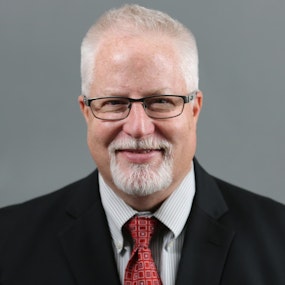What Does the Data Say?
The National Commission on Certification of Physician Assistants produces a lengthy report each year called the Statistical Profile of Certified PAs(1). This year is no exception as the 2020 report has just been released. This is a fantastic tool for applicants, students, PA educators, and practicing PAs as it highlights the growth of the profession in both geographical display and based on the various specialties we work in. The current report (2020) demonstrates that the number of certified PAs per 100,000 population in the United States has increased from 36 in 2016 to 45 in 2020 which is only likely to grow at this point due to the exponential growth of accredited PA programs that are projected to be open by 2023(2). As a personal timeline we had 50 accredited programs in 1994 when I began PA school and we had 145 accredited programs when I conducted my research for my dissertation in 2009. Now we have 263 fully accredited programs with another 48 projected by the accrediting body for the profession(3).
The top 5 states with the total number of certified PAs include New York, California, Pennsylvania, Texas, and Florida while the top 5 states ranked by PA concentration per 100,000 population includes Alaska, Pennsylvania, Connecticut, New York, and South Dakota. Interestingly, the states with the largest percentage of growth are Rhode Island, Mississippi, Arkansas, Indiana, and Nevada so we’re seeing growth in areas that demonstrate a broader need for PAs and most likely greater acceptance of the profession by health systems and our physician partners. The median age of certified PAs remains at 38 and the profession continues to be majority female with nearly 70% in that category as compared to nearly 24% in 1975. There are now 148,560 certified PAs in the United States and the diversity of the profession continues to be a challenge, however we are seeing an increase in the Asian population and 6.5% of respondents indicate they are Hispanic which is also on the rise.
Race as reported in 2020 Statistical Profile of Certified PAs
|
Race |
Number |
Percent |
|
White |
102,958 |
80.8% |
|
Black/African American |
4212 |
3.3% |
|
Asian |
4212 |
3.3% |
|
Native Hawaiian/Pacific Islander |
353 |
0.3% |
|
American Indian or Alaskan Native |
449 |
0.4% |
|
Other |
3558 |
2.8% |
|
Multi-race |
2625 |
2.1% |
|
Prefer not to answer |
5671 |
4.5% |
A review of the degrees that are represented among certified PAs shows the bulk of PAs continue to hold a Master’s degree (78.8%) while only 2% have completed their doctoral degree (PhD, DMSc, MD, DHSc). Another area of interest is the use of a second language in delivering care to our communities. Spanish is by far the most widely used by certified PAs when communicating with a patient in languages other than English. Of the 22.8% of PAs who indicate they communicate with patients in a language other than English, 17.3% of all certified PAs use Spanish.
The medical specialties list has also demonstrated a continued rise towards surgical subspecialties with 18.7% of PAs working in those fields while for the first time in my recollection, Family Medicine/General Practice has fallen into second place with 18.1% of PA still working in those areas. Psychiatry has grown to 1.8% from 1.3% in 2016 and Hospice and Palliative Care have had the largest percent of growth with a upward 216.2% change since 2016 followed by pain medicine at 157.3%. The use of PAs in urgent care settings has also increased by 248.5%. One last area of interest is the reasons why PAs leave their current job. The majority leave to seek another position while only 4.7% leave to join a PA educational program. This is surprisingly sad in that teaching the next generation of students is one of the greatest gifts in life. The work is hard but incredibly rewarding as we see the light go off in our students’ eyes. While this may reflect the salary challenges of an educational career one would hope that the quality of life that PA educators experience might offset that to some degree. Yes, educational programs are challenging from a workload perspective, but the flexibility and amount of time off that comes with education may be worth a second glance and the gift of developing lifelong relationships with the future PA workforce is certainly worthy of strong consideration. The best news of all is that when asked about why PAs are not actively working the lowest percentage answer was that work is not professionally challenging or satisfying. Only 2.1% of all certified PAs felt that the work lacked challenge or satisfaction so we must still hold the top prize as the happiest profession on the planet or at least in health care. Finally, let’s not forget the over 11,676 PAs who serve our Armed Forces as health care providers for our troops, sailors and guardsmen. It is after all the birthplace of our profession or at least a close cousin to Dr. Stead’s vision.
- National Commission on Certification of Physician Assistants. 2020 Statistical Profile of Certified PAs Annual Report. Accessed at: https://www.nccpa.net/resources/nccpa-research/ on July 19, 2021.
- Accreditation Review Commission on Education of the Physician Assistant, Inc.. Projected growth of the profession. Accessed at: http://www.arc-pa.org/projected-growth-as-of-3-30-2021/ on July 19, 2021.
- Accreditation Review Commission on Education for the Physician Assistant, Inc. Accredited programs. Accessed at: http://www.arc-pa.org/accreditation/accredited-programs/ on July 19, 2021.




